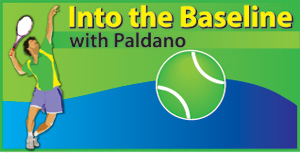Sports stress, fatigue and injury
Number of tennis players yet to reach 35 years of age but calling off their carrier in the past 10 years exceeds 50. Competition stress, fatigue and injuries are real threats to players. This is so even at national level in all countries.
The race to be a champion before 20 years of age places players into physically exhausting high energy training life style and competition schedule. In tennis, big names slide and faded away with incapacitating physical breakdown. Mental stress and depression follows the physical breakdown. In a downward spiralling reaction, players lose their jest to play. Makes the time, effort and resources spent a waste. This is becoming common than ever before.
Shock of Barty’s retirement
In the past two years, there were signs of Barty not taking the professional stress well. The track was well covered and television showed Barty in comfortable party mood prior to walking into a match with her ‘team’. Now we have the reason to suspected orchestration. A storm has been brewing.
On court, Australian Ashleigh Barty is graceful, a perfectionist, beautiful to watch and an effective sportswoman in performance. She brought back the old Australian-style of stroke making with all court tennis game of 1950s through to 1990s. Her exhibition of classical tennis proved effective against the groundstroke dominated popular tennis of the day. She claimed the top spot and that is where she is now. Barty, the name will sail into the future.
When she announced her retirement two weeks ago, to most of us was sudden and could not fathom out the reason for it. Only 25 years of age and looking very comfortable in the driving seat of global women’s tennis, all expected her to stay and not retire. She has stated her decision is personal and not anything else. If not for attraction she had for tennis, she would have been in the Australian cricket team. She switched to tennis.
Nadal
Over taxing schedule and the pressure of continuous demand for performance are threats to top end players in individual sport. Last week, in the Indian Wells event, Rafael Nadal lost the final. This year he returned to the circuit after nursing his injuries most of last year.
He had a close match against compatriot, up and coming Alcaraz Grafia in the semi-finals and survived. In 2022, Nadal did not register a loss. In the Indian Wells final, he lost to Taylor Fritz of the United States.
Nadal took injury time off in the final and after the match said that he had severe pain in the chest. His performance did not suffice to beat 6`5 tall American Fritz. Federer is still resting his knee. Halep is still not completely there along with good many others.
Injury from overdoing
In as much coaches and parents push and want all players doing well, it is an established fact high performance tennis is not for everyone.
In a rough count, a player could play thousands of shots, transferring good many tons of power, in a close match and cover three kilometres in sprints. Mentally, process thousands tactical decisions and transfer them into reaction and stay on the court for four gruelling hours for just one match. It is a miracle if nothing happens to the body.
A capable body can accommodate the match but often not the training for it. High intensity training always places players in the threshold of injury. In a ‘match stress’ situation, it surfaces disabling the player. Yet it cannot be otherwise, a ‘Catch-22′ situation in sport. In a team sport players can rest, a possibility not available in individual sport.
‘Watch Dog’ and ranking
At national level, a precautionary mechanism against early drop out and injury, an advisory panel will be a good idea. Countries cannot lose players who have come through 10 years of hard and projected work. Young players cannot walk out after investing 10 years of their life into development. This is happening and it is not good for the player, country and the sport. This aspect needs the advice of experienced experts.
High performance sports require minimum of 65 hours of sleep a week to recuperate. Which is nine hours a day. There are many little life style oriented aspects like this to avoid injuries. These being not common knowledge, some device must be available especially when the players reach mid teens.
Winning is not the only target in sports, surviving and lasting makes a player reach maturity, money-wise richer and recognition rest of their life. These are the effects of tennis ranking mechanism.
Indian Wells 2022
Tennis shows no ‘hold backs’ this year. Professional bodies are putting out events for six months at a time. In Europe, the war in Ukraine will create situations.
The four semi-finalists in the Indian Wells women’s events were Swiatek, Halep, Badosa and Sakkari. In the final, Swiatek beat Sakkari convincingly. Swiatek is from Poland. With Barty giving up competition tennis, Swiatek will be the first Polish citizen to hold number one position in tennis. Similarly, Sakkari will be the first Greek to hold number two position in tennis.
Badosa, former French Open Junior champion from Spain, lost in the semi-finals showing all the potential to be No.1 in the Women’s ranking soon. Last year she won the Indian Wells event. Miami-Open finishes in March and the European clay court tennis events will begin in April.
–George Paldano, European and Asian competition player;Coach for German Tennis Federation; National coach Brunei and Sri Lanka; Davis Cup, Federation Cup; coached top 200 ATP,WTA and ITF Top 50; WhatsApp 0775448880–


